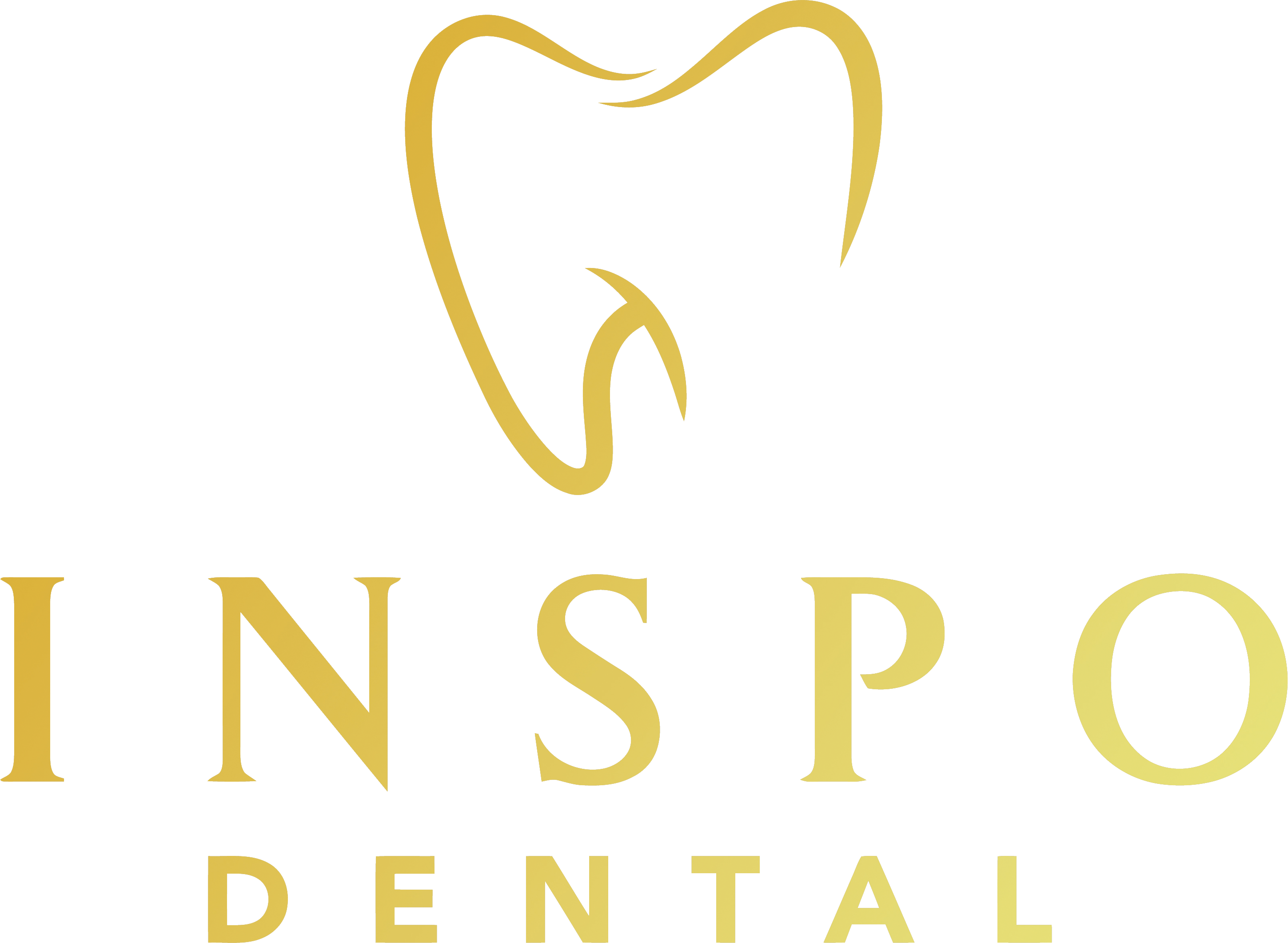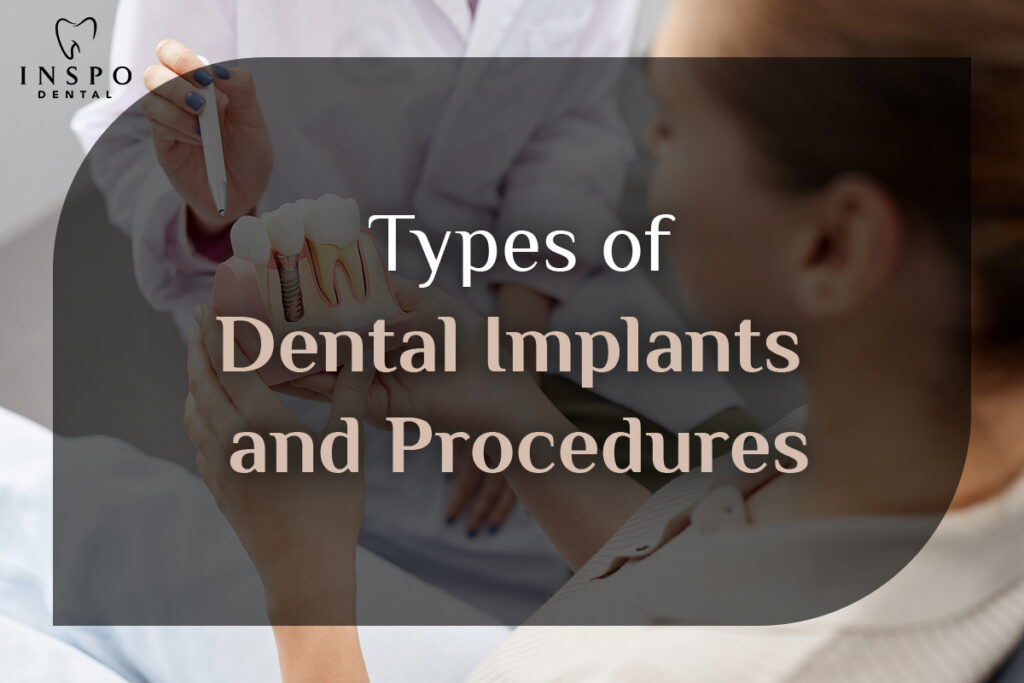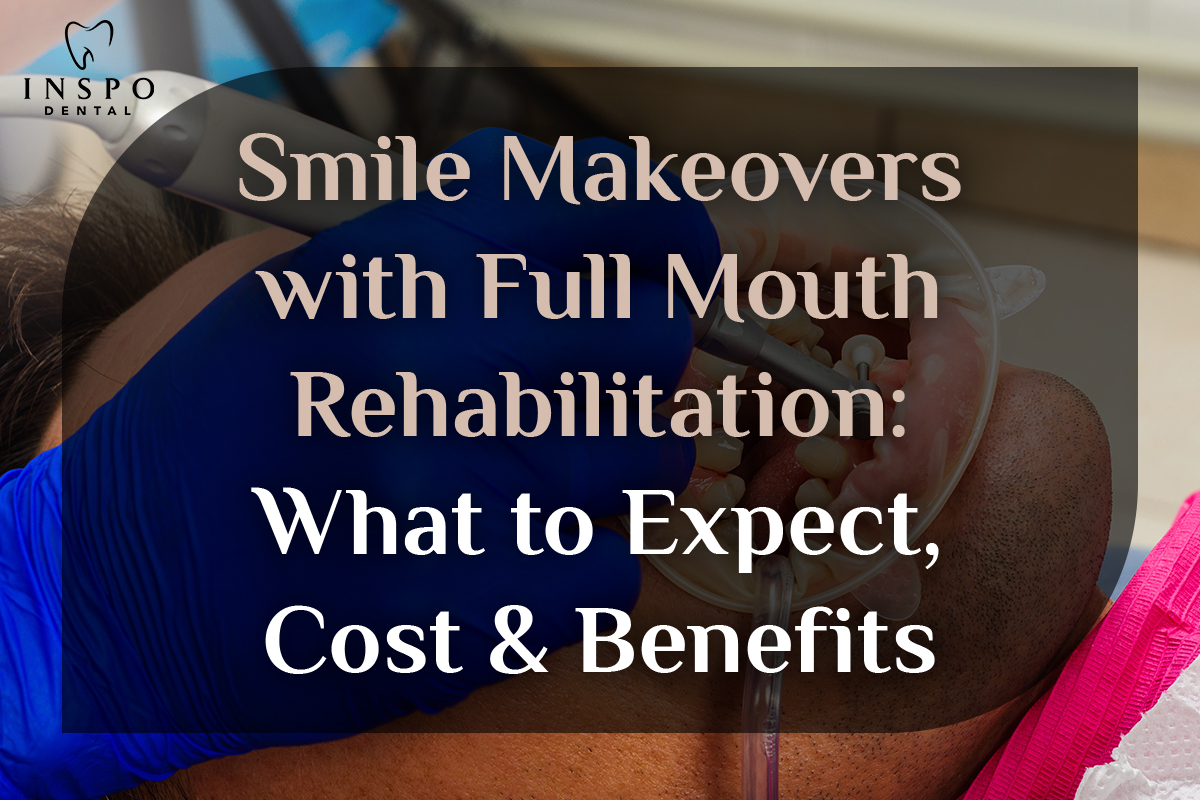Dental implants are a popular and effective way to replace missing teeth, offering a permanent solution that looks, feels, and functions like natural teeth. They involve surgically placing an artificial tooth root (usually made of titanium) into the jawbone, which provides a foundation for replacement teeth. Here’s an overview of the types of dental implants and the procedures involved in getting them.
Types of Dental Implants
- Endosteal Implants
- What They Are:
These are the most common type of dental implants. Endosteal implants are surgically inserted directly into the jawbone and act as a root for the artificial tooth. They are typically made of titanium and shaped like screws, cylinders, or blades. - Best For:
Patients with sufficient jawbone density. - Procedure:
After the implant is placed into the jawbone, it needs time to fuse (osseointegrate) with the bone before a crown or prosthetic tooth can be attached.
- What They Are:
- Subperiosteal Implants
- What They Are:
These implants are placed under the gum but on or above the jawbone, rather than directly into the bone. Subperiosteal implants are used when there isn’t enough healthy jawbone for endosteal implants and when bone grafting is not an option. - Best For:
Patients with insufficient jawbone who are unable or unwilling to undergo a bone graft. - Procedure:
A metal framework is placed under the gum, with posts extending through the gum. The gum heals over the frame, securing it in place, and artificial teeth are attached to the posts.
- What They Are:
- Zygomatic Implants
- What They Are:
These are less common and are used when there is severe bone loss in the upper jaw. Zygomatic implants are anchored in the cheekbone (zygoma) rather than the jawbone. - Best For:
Patients with significant upper jawbone loss who cannot have traditional implants or bone grafting. - Procedure:
The procedure is more complex than other implants and requires a highly skilled oral surgeon. They provide a solution for individuals who may otherwise need dentures.
- What They Are:
Specialized Types of Implants
- All-on-4 Implants
- What They Are:
A full-arch restoration that uses four strategically placed implants to support an entire arch of prosthetic teeth (either upper or lower). The “All-on-4” concept allows for full restoration using fewer implants than traditional methods. - Best For:
Patients missing most or all of their teeth in a specific arch. - Procedure:
Four implants are placed in the jaw, two at the front and two angled at the back for maximum support. Temporary teeth are attached the same day, and after healing, permanent prosthetic teeth are placed.
- What They Are:
- Mini Dental Implants (MDIs)
- What They Are:
Mini implants are smaller than traditional implants (less than 3mm in diameter). They are used primarily to stabilize dentures and can be an alternative for those with inadequate bone density for standard implants. - Best For:
Patients needing denture stabilization or with narrow jawbones. - Procedure:
The procedure is less invasive and often requires no bone grafting. The implant and post are placed in one step, and the denture or crown can often be attached immediately.
- What They Are:
- Same-Day Implants (Immediate Load Implants)
- What They Are:
Also known as “teeth in a day,” this type of implant allows for the placement of the implant and the temporary tooth in a single appointment, unlike traditional implants, which require several months of healing. - Best For:
Patients with sufficient bone density who need a tooth replaced quickly. - Procedure:
After the implant is placed in the jaw, a temporary crown is attached the same day. The permanent crown is fitted after the healing process, usually in a few months.
- What They Are:
Dental Implant Procedures: Step-by-Step
- Initial Consultation and Evaluation
- During your first consultation, the dentist will evaluate your oral health, take X-rays, and sometimes perform a CT scan to assess the quality and quantity of your jawbone.
- A treatment plan is developed based on your specific needs, including which type of implant is appropriate.
- Bone Grafting (if needed)
- If you don’t have sufficient jawbone density to support the implant, a bone graft may be required. Bone grafting involves placing a piece of bone (either from your own body or from a donor) into the jawbone to encourage new bone growth.
- After the graft, several months of healing are typically required before the implant can be placed.
- Implant Placement Surgery
- The implant is surgically placed into the jawbone under local anesthesia or sedation. The gum tissue is cut to expose the bone, and a hole is drilled to place the implant screw.
- The implant is inserted deep into the bone, and the gum is stitched over the implant to heal.
- Healing time varies, typically taking 3 to 6 months for osseointegration, during which the bone fuses with the implant.
- Abutment Placement
- Once the implant has integrated with the jawbone, a second minor surgery is performed to attach an abutment to the implant. The abutment is a connector that will hold the crown or prosthetic tooth.
- In some cases, the abutment may be placed during the initial surgery.
- Crown or Prosthetic Attachment
- After the gums heal around the abutment, impressions of your teeth are taken to design your custom crown, bridge, or denture.
- Once the final prosthetic is ready, it is secured to the abutment, completing the dental implant process.
Recovery and Aftercare
- Healing Time: Full healing can take anywhere from 3 to 9 months, depending on the complexity of the case and whether bone grafting was required.
- Aftercare: Proper aftercare includes maintaining good oral hygiene, avoiding hard or chewy foods immediately after surgery, and attending follow-up appointments with your dentist.
- Success Rates: Dental implants have a success rate of about 95%, but success can depend on factors like oral hygiene, overall health, and smoking status.
Cost of Dental Implants
- Factors Affecting Cost: The cost of dental implants varies based on the number of implants, the type of implant, whether bone grafting is needed, and the geographical location. In general, a single implant can cost between $1,500 and $6,000.
- Insurance Coverage: Dental insurance typically covers part of the procedure, especially if it is medically necessary. However, many plans do not cover the entire cost, so financing options may be necessary.
Advantages of Dental Implants
Dental implants provide several significant benefits compared to traditional tooth replacement options, such as bridges or dentures. Here’s an in-depth look at why dental implants are often considered the best long-term solution for missing teeth:
- Natural Look and Feel:
- Implants closely mimic the appearance, feel, and function of natural teeth. The implant fuses with the jawbone, making the replacement tooth highly stable and indistinguishable from the surrounding teeth.
- The custom-made crown is designed to match the shape, size, and color of your natural teeth, ensuring a seamless look.
- Long-Lasting Solution:
- With proper care, dental implants can last for decades, often a lifetime. Unlike bridges or dentures, which may need to be replaced every 5-10 years, implants offer a more permanent solution.
- Titanium, the material used in most implants, is biocompatible, meaning it integrates well with bone tissue and resists corrosion or damage over time.
- Prevention of Bone Loss:
- When a tooth is lost, the jawbone in the area begins to deteriorate due to the lack of stimulation. Dental implants help preserve the bone by providing the necessary stimulation through chewing forces.
- Over time, this can prevent the sunken, aged look that often accompanies long-term tooth loss or poorly fitted dentures.
- Improved Oral Health:
- Unlike dental bridges, which require the reduction of adjacent healthy teeth to support the bridge, implants do not affect neighboring teeth. This preserves the integrity of the remaining teeth.
- Dental implants also make it easier to maintain oral hygiene. You can brush and floss normally around an implant, reducing the risk of cavities or gum disease compared to bridges or dentures.
- Increased Comfort and Stability:
- Unlike removable dentures, implants are permanently fixed in the mouth, eliminating the discomfort and inconvenience of removing dentures at night or worrying about them slipping while eating or speaking.
- The stability provided by implants makes it easier to chew and enjoy all types of food, which can often be challenging with traditional dentures.
- Improved Speech:
- Missing teeth or ill-fitting dentures can impair speech, causing slurred or mumbled words. Implants provide a stable foundation for replacement teeth, allowing you to speak more clearly and confidently.
- The permanence of implants eliminates the “clicking” sound that some denture wearers experience during speaking.
- Increased Confidence:
- Dental implants provide a natural-looking and long-lasting replacement, which helps boost self-esteem. Many people feel more confident smiling, eating, and interacting socially with implants compared to dentures or missing teeth.
- Dental implants provide a natural-looking and long-lasting replacement, which helps boost self-esteem. Many people feel more confident smiling, eating, and interacting socially with implants compared to dentures or missing teeth.
Potential Risks and Complications of Dental Implants
While dental implants are highly successful, with a success rate of about 95%, they are not without potential risks or complications. Here’s what you need to be aware of:
- Infection at the Implant Site:
- As with any surgical procedure, there is a risk of infection during or after the implant placement. Infections can arise from poor oral hygiene, smoking, or insufficient healing after surgery.
- To prevent infection, follow your dentist’s instructions carefully, maintain excellent oral hygiene, and avoid smoking during the healing process.
- Implant Failure:
- In rare cases, the implant may fail to integrate with the jawbone (a process called osseointegration). This can happen if there isn’t enough healthy bone to support the implant or if the patient engages in behaviors that compromise healing, such as smoking or poor oral hygiene.
- Implant failure can also occur due to excessive force being placed on the implant too soon after placement.
- Nerve Damage:
- If the implant is placed too close to a nerve, it can cause pain, numbness, or tingling in the lips, gums, or chin. This is usually a rare complication and can be avoided by carefully planning the implant placement using advanced imaging techniques like 3D scans.
- If nerve damage occurs, the implant may need to be repositioned.
- Sinus Issues (for Upper Jaw Implants):
- In the case of upper jaw implants, there is a risk of the implant penetrating into the sinus cavity, especially if there is insufficient bone between the jaw and the sinuses.
- Sinus lift surgery may be required before implant placement to ensure there is enough bone for successful implantation.
- Peri-implantitis:
- This is an inflammatory condition similar to gum disease but occurs around a dental implant. It can lead to bone loss around the implant and, if left untreated, implant failure.
- Maintaining good oral hygiene and regular dental check-ups can help prevent peri-implantitis.
- Allergic Reactions:
- Though rare, some patients may have an allergic reaction to the titanium alloy used in implants. If you are allergic to certain metals, discuss alternative implant materials, such as zirconia, with your dentist.
- Though rare, some patients may have an allergic reaction to the titanium alloy used in implants. If you are allergic to certain metals, discuss alternative implant materials, such as zirconia, with your dentist.
Suitability for Dental Implants
Not everyone is an immediate candidate for dental implants. Several factors can affect whether implants are suitable for you:
- Bone Density:
- Adequate jawbone density is essential for implant success. If you have suffered significant bone loss due to gum disease or prolonged tooth loss, you may need bone grafting before implant placement.
- Bone grafting involves adding bone material to the jaw to create a strong foundation for the implant.
- Oral Health:
- Healthy gums are crucial for the success of dental implants. Patients with active gum disease (periodontitis) need to have their condition treated before proceeding with implants, as infection can compromise the implant’s stability.
- Healthy gums are crucial for the success of dental implants. Patients with active gum disease (periodontitis) need to have their condition treated before proceeding with implants, as infection can compromise the implant’s stability.
- General Health Conditions:
- Certain medical conditions, such as uncontrolled diabetes, immune system disorders, or conditions requiring long-term steroid use, can impair healing and increase the risk of implant failure.
- Smokers are also at a higher risk of complications. Quitting smoking before and after implant placement is strongly recommended.
- Age Considerations:
- Dental implants can be placed in adults of any age, provided they meet the health criteria. However, they are not recommended for young individuals whose jawbones are still growing.
- For adolescents, dentists may recommend waiting until their late teens or early twenties when jaw growth is complete.
- Budget Considerations:
- Implants tend to be more expensive than other tooth replacement options, like bridges or dentures. However, they are a long-term investment that typically requires less maintenance and fewer replacements over time.
- Some dental insurance plans cover part of the implant procedure, especially if it is medically necessary, though it’s essential to check with your provider for specifics.
Technological Advancements in Implant Dentistry
Recent advancements in dental technology have made implant procedures more precise, predictable, and successful:
- 3D Imaging and Treatment Planning:
- Cone-beam computed tomography (CBCT) provides 3D images of the jawbone, allowing for more accurate planning of implant placement. This technology helps minimize risks like nerve damage or improper positioning.
- Cone-beam computed tomography (CBCT) provides 3D images of the jawbone, allowing for more accurate planning of implant placement. This technology helps minimize risks like nerve damage or improper positioning.
- Guided Implant Surgery:
- Digital planning software can create a custom surgical guide that ensures the implant is placed with the highest precision. This reduces complications and improves the overall success of the procedure.
- Digital planning software can create a custom surgical guide that ensures the implant is placed with the highest precision. This reduces complications and improves the overall success of the procedure.
- CAD/CAM Technology for Prosthetics:
- Computer-aided design and manufacturing (CAD/CAM) allow dentists to create highly precise, custom-fit crowns, bridges, or dentures that are more aesthetically pleasing and functionally effective.
- Computer-aided design and manufacturing (CAD/CAM) allow dentists to create highly precise, custom-fit crowns, bridges, or dentures that are more aesthetically pleasing and functionally effective.
- Zirconia Implants:
- For patients with titanium allergies or those seeking a metal-free alternative, zirconia implants offer a biocompatible, tooth-colored option that provides similar strength and stability.
Maintaining Dental Implants: Long-Term Care and Best Practices
Once your dental implants are placed and the healing process is complete, maintaining them properly is crucial for ensuring their longevity. While implants are designed to last a lifetime, good oral hygiene and regular dental care are essential for preventing complications. Here’s how to take care of your dental implants over the long term.
- Daily Oral Hygiene
- Brushing:
Just like natural teeth, dental implants require thorough brushing twice a day. Use a soft-bristled toothbrush to avoid damaging the gum tissue around the implant.- Electric toothbrushes can also be helpful, as they provide more consistent cleaning and can reduce plaque buildup.
- Electric toothbrushes can also be helpful, as they provide more consistent cleaning and can reduce plaque buildup.
- Flossing:
Flossing is essential to remove plaque and food particles from between the teeth and around the implant. Special floss designed for implants or interdental brushes can help clean hard-to-reach areas.- Consider using water flossers (oral irrigators) to clean around the implant, especially if you have multiple implants or bridges.
- Consider using water flossers (oral irrigators) to clean around the implant, especially if you have multiple implants or bridges.
- Mouthwash:
Use an antibacterial mouthwash to reduce plaque and bacteria in the mouth, preventing gum disease that can affect the implant’s success.
- Routine Dental Check-ups
- Regular Visits:
Schedule regular dental check-ups every six months to monitor the health of your implants and surrounding gums. Your dentist will ensure that the implant is functioning properly and that there is no sign of infection or bone loss. - Professional Cleanings:
Regular professional cleanings by a dental hygienist will help remove any plaque or tartar that has built up around the implants, further protecting the surrounding tissue and the longevity of the implant.
- Avoiding Harmful Habits
- Smoking:
Smoking can significantly increase the risk of implant failure and complications such as peri-implantitis (infection around the implant). If you smoke, it’s recommended that you quit to improve the long-term success of your dental implants. - Teeth Grinding (Bruxism):
Grinding or clenching your teeth (bruxism) can put excessive pressure on your implants and cause them to fail. If you have a history of teeth grinding, your dentist may recommend wearing a nightguard to protect both your natural teeth and implants. - Avoid Chewing Hard Foods:
Be cautious when chewing on hard items such as ice, hard candies, or popcorn kernels, as they can damage your implants or the surrounding prosthetics (crowns or bridges).
- Monitoring for Signs of Problems
- Gum Inflammation:
Watch for signs of gum inflammation or recession around the implant. Redness, swelling, or bleeding gums may be a sign of peri-implantitis, a condition that can lead to bone loss if left untreated. - Implant Mobility:
A dental implant should feel as stable as a natural tooth. If the implant feels loose or you notice any movement, contact your dentist immediately. Loose implants may indicate bone loss or implant failure, and early intervention is crucial. - Pain or Discomfort:
While some discomfort is normal after surgery, persistent or worsening pain after the healing period is a warning sign that something may be wrong. Pain can be caused by infection, nerve damage, or issues with the implant’s placement.
Dental Implants vs. Other Tooth Replacement Options
Understanding how dental implants compare to other common tooth replacement methods, such as dentures and dental bridges, can help you make an informed decision about the best solution for your needs.
- Dental Implants vs. Dentures
- Stability and Comfort:
Implants provide superior stability compared to removable dentures, which can slip or shift in the mouth. Implants function like natural teeth, providing a more comfortable and secure solution for chewing, speaking, and daily activities. - Bone Preservation:
Dental implants help prevent bone loss in the jaw, while traditional dentures do not stimulate the jawbone, leading to gradual bone deterioration over time. - Maintenance:
Dentures require daily removal for cleaning and need periodic adjustments or replacements as the shape of the jaw changes. Implants, on the other hand, are permanently fixed and can be cared for with regular brushing and flossing. - Longevity:
Implants are designed to last a lifetime with proper care, whereas dentures typically need to be replaced every 5-10 years. - Cost:
While implants are more expensive upfront, they may be more cost-effective in the long run due to their longevity and reduced maintenance requirements.
- Dental Implants vs. Dental Bridges
- Impact on Surrounding Teeth:
Unlike bridges, which rely on neighboring teeth for support and require them to be reshaped, dental implants are independent and do not affect adjacent teeth. This helps preserve the health and integrity of the surrounding teeth. - Durability and Stability:
Bridges typically last 10-15 years and may require replacement or adjustment over time, whereas implants can last a lifetime. Implants also provide more stability for chewing compared to bridges, which can wear down over time. - Bone Health:
Like dentures, bridges do not prevent bone loss in the jaw. Implants, however, provide the necessary stimulation to maintain bone density and structure. - Aesthetics:
Both implants and bridges can offer aesthetically pleasing results, but implants tend to look more natural since they emerge directly from the gum line like a natural tooth.
Financing Options for Dental Implants
Given the cost of dental implants, many patients explore various financing options to make the procedure more affordable. Here are some common ways to manage the cost of implants:
- Dental Insurance
- Dental insurance may cover part of the cost of implants, especially if they are medically necessary. However, coverage can vary widely by provider and plan.
- Some plans may cover the crown but not the implant post, or they may only offer partial coverage for implant surgery.
- It’s essential to review your dental insurance policy and discuss your coverage options with your provider before proceeding with implant surgery.
- Payment Plans
- Many dental practices offer in-house financing or third-party payment plans through companies like CareCredit. These plans allow you to spread the cost of implants over several months or years with little to no interest, depending on the terms.
- Discuss payment plan options with your dentist to find a solution that fits your budget.
- Health Savings Accounts (HSA) and Flexible Spending Accounts (FSA)
- If you have an HSA or FSA, you can use these funds to pay for dental implants. These accounts allow you to save pre-tax dollars for healthcare expenses, including dental procedures like implants.
- Be sure to check the contribution limits and specific terms for using HSA/FSA funds.
- Dental Tourism
- Some patients choose to travel abroad for dental implants in countries where the procedure is significantly less expensive. Countries like Mexico, Costa Rica, and Thailand are popular destinations for dental tourism.
- However, dental tourism comes with risks, including the quality of care, the need for follow-up visits, and travel expenses. It’s important to thoroughly research the clinic and ensure that it adheres to high standards of care before considering this option.
Emerging Trends in Dental Implants
As dental technology continues to evolve, several exciting trends are making implant procedures more efficient, comfortable, and accessible for patients:
- 3D Printing for Implants
- 3D printing is revolutionizing the dental industry by allowing for the creation of highly accurate, custom implants and prosthetics. Dentists can use 3D printing to produce crowns, bridges, and abutments faster and more precisely than traditional methods.
- This technology reduces turnaround time and can improve the overall fit and aesthetic of dental restorations.
- Digital Smile Design (DSD)
- Digital Smile Design uses advanced software to create a virtual model of your smile, allowing you to see the expected results of your implant procedure before it begins.
- This technology helps improve communication between the patient and dentist, ensuring the final result aligns with the patient’s aesthetic and functional goals.
- Improved Materials
- While titanium has long been the gold standard for implants, research into new materials like zirconia is offering additional options for patients who prefer a metal-free alternative.
- Zirconia implants are known for their strength, biocompatibility, and aesthetic appeal, making them ideal for patients with metal sensitivities or those seeking a more natural-looking solution.
Dental implants represent one of the most reliable, long-lasting, and natural-looking solutions for tooth replacement. With advances in technology and the availability of various implant types and procedures, there’s a solution for virtually every patient, whether you need to replace a single tooth or restore an entire arch. By maintaining good oral hygiene, attending regular check-ups, and choosing the right implant specialist, you can enjoy the benefits of dental implants for a lifetime.
If you’re considering dental implants, consult with your dentist or an oral surgeon to explore your options and develop a personalized treatment plan that addresses your specific needs, preferences, and budget.






